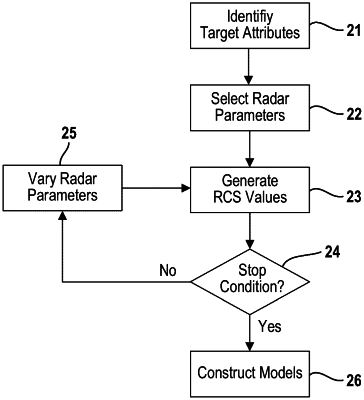| CPC G09B 9/54 (2013.01) [G01S 7/4052 (2013.01); G01S 7/415 (2013.01); G01S 13/931 (2013.01); G01S 7/4091 (2021.05)] | 19 Claims |

|
1. A computer-implemented method for constructing a reduced statistical model for a given target captured by an automotive radar, comprising:
identifying, by a computer program executed by a computer processor, one or more attributes for the given target;
selecting, by the computer program executed by the computer processor, an initial set of values for one or more radar parameters;
determining, by an electromagnetic field solver executed by the computer processor, a plurality of radar cross-section values for the given target using the initial set of values while randomly varying values for the one or more target attributes, wherein the electromagnetic field solver are computer executable instructions that solve Maxwell equations directly to provide the plurality of radar cross-section values; and
constructing, by the computer program executed by a computer processor, parametric statistical model for one or more scatters distributed in two-dimensional or three-dimensional space from the plurality of radar cross-section values, where the parametric statistical model represents the given target.
|